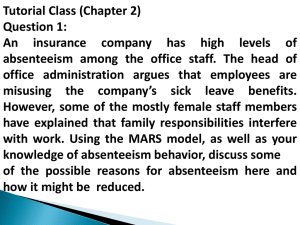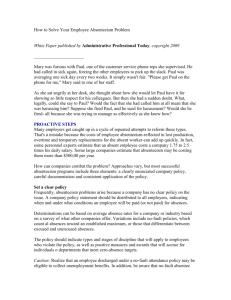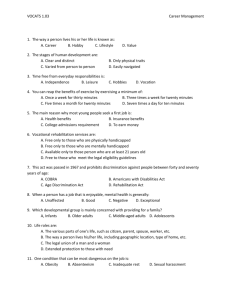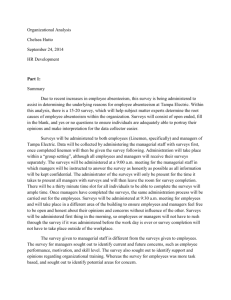TEACHER ABSENTEEISM: THE SCHOOL FACTOR
advertisement
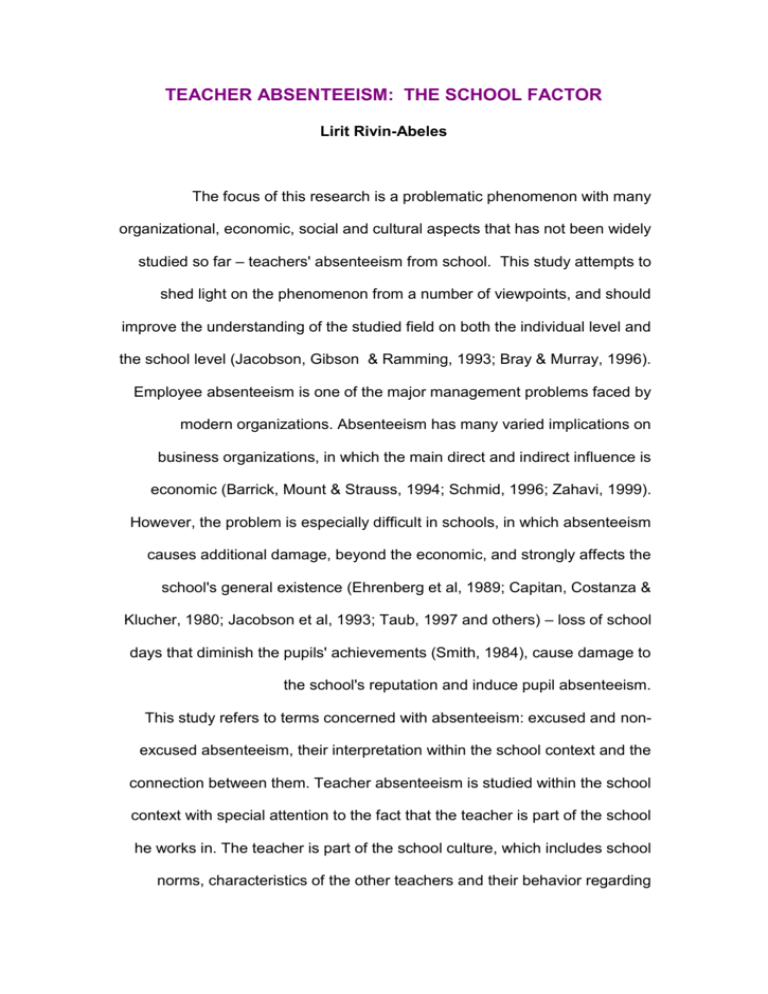
TEACHER ABSENTEEISM: THE SCHOOL FACTOR Lirit Rivin-Abeles The focus of this research is a problematic phenomenon with many organizational, economic, social and cultural aspects that has not been widely studied so far – teachers' absenteeism from school. This study attempts to shed light on the phenomenon from a number of viewpoints, and should improve the understanding of the studied field on both the individual level and the school level (Jacobson, Gibson & Ramming, 1993; Bray & Murray, 1996). Employee absenteeism is one of the major management problems faced by modern organizations. Absenteeism has many varied implications on business organizations, in which the main direct and indirect influence is economic (Barrick, Mount & Strauss, 1994; Schmid, 1996; Zahavi, 1999). However, the problem is especially difficult in schools, in which absenteeism causes additional damage, beyond the economic, and strongly affects the school's general existence (Ehrenberg et al, 1989; Capitan, Costanza & Klucher, 1980; Jacobson et al, 1993; Taub, 1997 and others) – loss of school days that diminish the pupils' achievements (Smith, 1984), cause damage to the school's reputation and induce pupil absenteeism. This study refers to terms concerned with absenteeism: excused and nonexcused absenteeism, their interpretation within the school context and the connection between them. Teacher absenteeism is studied within the school context with special attention to the fact that the teacher is part of the school he works in. The teacher is part of the school culture, which includes school norms, characteristics of the other teachers and their behavior regarding absenteeism. Furthermore, the school is typified by its form of management, including human resources management, in the context of control and supervision of the human resource element in the school. Since the teacher "belongs" to the school (sociologically), he adapts to it and internalizes its cultural norms and the behavior of others in his workplace (the school absenteeism culture). The study assumes that belonging to a certain school will constitute a unique interpretation in addition to the traditional explanations of teacher absenteeism. The present research examines this aspect by means of multi-linear analysis, which enables scrutiny of both levels (the teacher and the school) and their connection in a single analysis. That is to say, instead of assuming that the influence of schools is similar for all teachers, or negligible, it will be examined here as a source of influence that is expressed differently by teachers' absenteeism behavior. The study also focuses on examining the differences in school absenteeism. A school is part of a (concentric) system; it belongs to a certain education stage, to a certain geographic area, to a certain education trend, even to a specific sector. All these cultural environments affect the school and its teachers. Inasmuch as schools differ in many factors, this research presumes that they differ in their degree of absenteeism, and that some of the variance in school absenteeism (beyond teachers' absenteeism as individuals) can be explained by environmental cultural factors and by the in-school teachers' attributes. Methodology This study measured absenteeism in a complex and multi-dimensional way: the relevant measurement unit for teachers is hours and not workdays, as teachers can teach any number of hours per workday. Also, in addition to the accepted measures of the absenteeism itself and the quantity of absent hours on the level of both the teacher and the school, this study employed the number of absences and the proportion of justified and non-justified absenteeism in relation to the teacher's job base. The study was performed on an inclusive sample that included two subsamples. The inclusive sample contained 6,808 teachers in 1,444 schools. It represented teachers and schools from various education stages, geographical areas (districts), trends (state/state-religious) and sectors (Jewish/non-Jewish). This sample was separated into two sub-samples. One included medium and large schools, with nested data, that comprised 1,461 teachers in 131 schools, and it is the focus of the research. The second subsample – of small schools – served as a basis for various comparisons and for examination of the generalizability of the findings of the first sample. Teachers act within a class within a school and the school belongs to a certain level of the education system. If we regard schools as social, organizational and management units that affect the behavior of the teachers that work there, then a simple regression analysis that analyzes that teachers' characteristics or those of the school, disregarding the differences that the influence of the school on them could have, is not sufficient. This study employed multi-linear analysis in order to examine the dependence between the teachers' absenteeism behavior and the social and cultural structure of the school. This analysis also enabled us to examine factors that create differences in absenteeism between schools, while combining the levels of teachers and school. Multi-Linear Analysis (MLA) is a multi-level model by means of which one can examine the variance in teacher absenteeism within the school and between schools. Error variance is divided to two components between and within the schools. The fact that the estimates on the teacher level within the schools are similar, that is to say there is a similarity between teachers that teach at the same school, does not divert the findings (Bryk & Raudenbush, 1992). As opposed to cases in which the findings are analyzed only on the individual level, MLA uses the schools' regression constant, and these become dependent variables in the regressions between schools (Bryk & Raudenbush, 1992; Zeltzer, 1995). Various groups of variables represented in different models explain the differences in teacher absenteeism between schools. This study made use of Hierarchical Linear Modeling (HLM3). Findings Most research assumptions were confirmed. Differences between schools were found in the rate of school absenteeism, which are indeed partially explained by internal cultural environmental characteristics, such as the qualities of the teachers in the school, and by external factors, such as the education stage. A total of 21% of absenteeism variance was explained. The assumption regarding the influence of the school absenteeism culture on the teacher in that school was also confirmed. Contributions This study has a number of theoretic and pragmatic contributions. It makes our understanding of the teacher's behavior in the organizational (school) context more acute, through examination of the teacher's close work environment. The relatively innovative analysis enables a link between both levels – the teacher and the school – and explains absenteeism in a way that was not done until now. Teacher absenteeism is usually studied on an individual level and that to a small extent, nor was the phenomenon examined in the school context, nor were the differences between schools examined as was done here. The present study also has practical implications. Understanding the school context enables us to focus on dealing with absenteeism not only of teachers (as individuals), but also of the entire school, which makes it an analysis unit and an intervention unit. The discussion presents a number of intervention directions.
